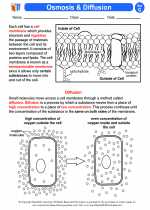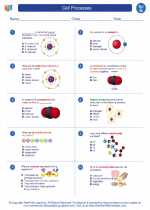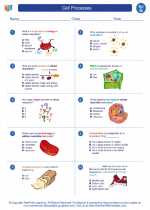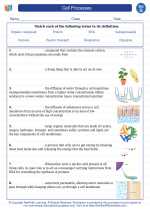Mosses: An Overview
Mosses are small, non-vascular plants that belong to the division Bryophyta. They are found in moist, shady environments and are commonly seen in forests, bogs, and other damp habitats. Mosses play a crucial role in the ecosystem by providing habitat for small organisms, preventing soil erosion, and contributing to nutrient cycling.
Life Cycle of Mosses
The life cycle of mosses is characterized by alternation of generations, involving both gametophyte and sporophyte stages. The gametophyte is the dominant stage and consists of the familiar green, leafy structure that we typically recognize as moss. The sporophyte, on the other hand, grows from the gametophyte and is responsible for producing spores through meiosis.
Key Features of Mosses
- Non-Vascular: Mosses lack vascular tissues, such as xylem and phloem, and thus rely on osmosis and diffusion for water and nutrient transport.
- Rhizoids: These are root-like structures that anchor the moss to the substrate and absorb water and nutrients.
- Spore Capsules: The sporophyte of mosses bears spore capsules at its tip, from which haploid spores are released into the environment.
- Environmental Indicators: Due to their sensitivity to environmental changes, mosses are often used as indicators of air and water quality.
Study Guide
To effectively study mosses, consider the following aspects:
- Understanding the life cycle of mosses, including the alternation of generations and the roles of gametophyte and sporophyte stages.
- Identifying key features of mosses, such as their non-vascular nature, rhizoids, and spore capsules.
- Exploring the ecological significance of mosses and their contributions to ecosystem dynamics.
- Examining the adaptations of mosses to specific habitats and their roles as environmental indicators.
- Engaging in hands-on activities, such as moss identification and observation in different natural settings.
By delving into these aspects, you can gain a comprehensive understanding of mosses and their ecological importance.
.◂Science Worksheets and Study Guides Seventh Grade. Cell Processes

 Activity Lesson
Activity Lesson
 Worksheet/Answer key
Worksheet/Answer key
 Worksheet/Answer key
Worksheet/Answer key
 Worksheet/Answer key
Worksheet/Answer key
 Worksheet/Answer key
Worksheet/Answer key
 Vocabulary/Answer key
Vocabulary/Answer key
 Vocabulary/Answer key
Vocabulary/Answer key
 Vocabulary/Answer key
Vocabulary/Answer key
 Vocabulary/Answer key
Vocabulary/Answer key
 Vocabulary/Answer key
Vocabulary/Answer key
 Vocabulary/Answer key
Vocabulary/Answer key
 Vocabulary/Answer key
Vocabulary/Answer key
